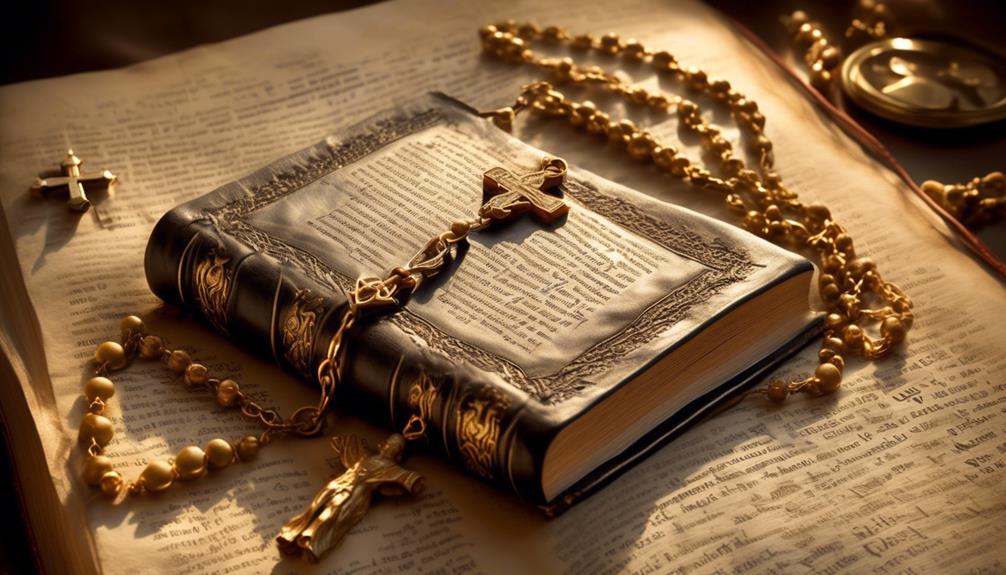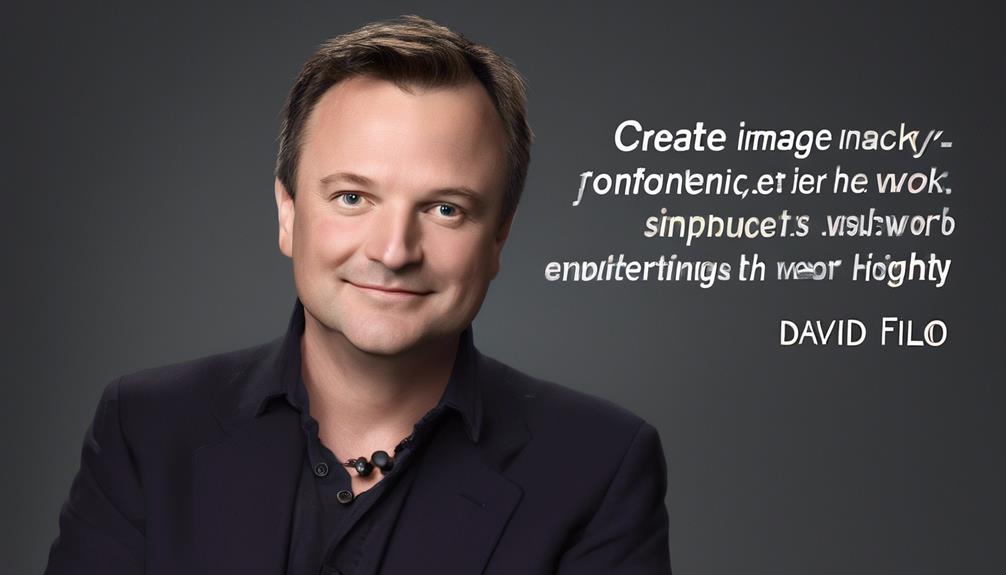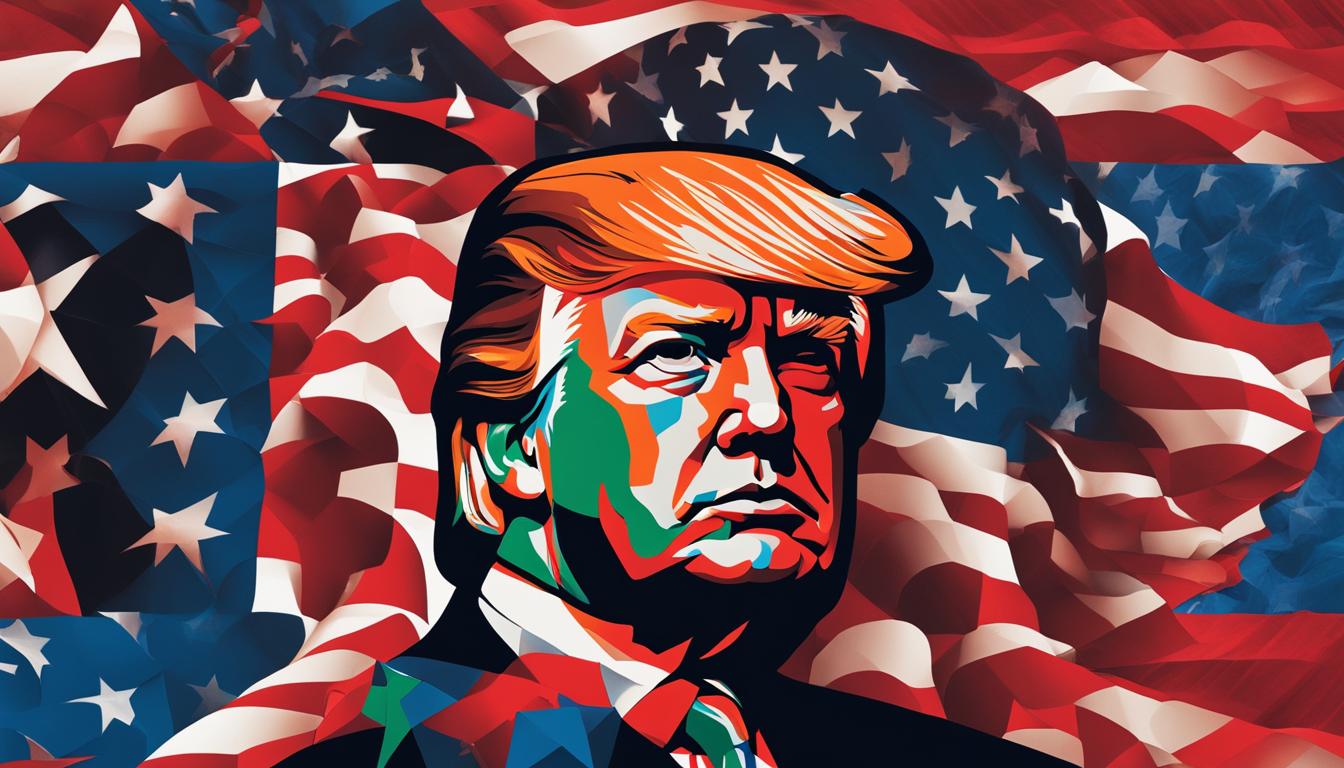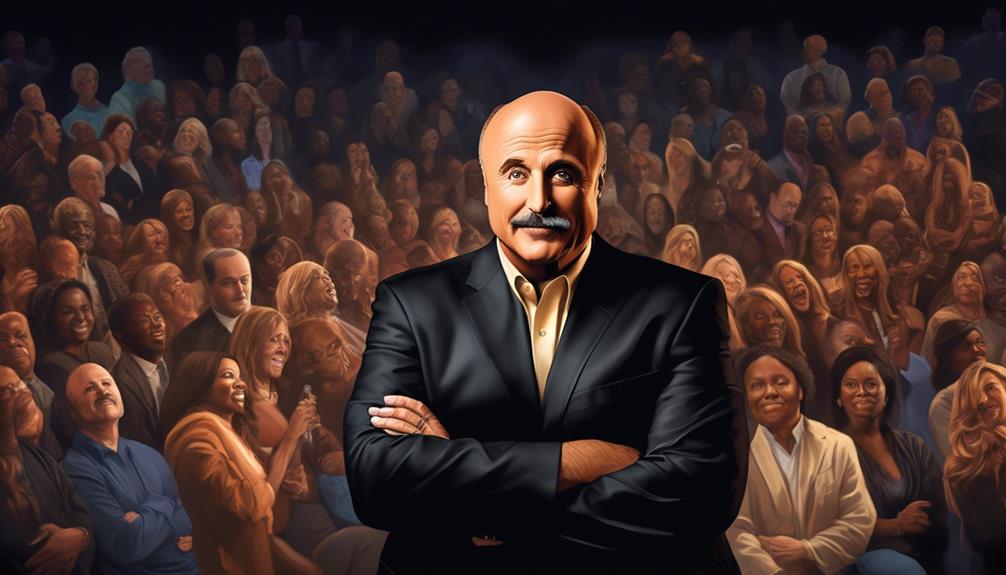Delving into the teachings of Pope Benedict XVI, the 265th leader of the Catholic Church, we discover an abundance of insight and direction. His instruction covers a broad spectrum of subjects, including faith and love, as well as prayer and forgiveness.
The reader may not be aware of the profound impact that Pope Benedict XVI has had on the Catholic Church and its followers. With his calm and measured approach, he offers insights into the power of humility, the dignity of life, and the pursuit of truth.
Through his words, we are reminded of the call to holiness and the importance of nurturing our spiritual lives. Join us as we delve into the inspiring quotes of Pope Benedict XVI.
Key Takeaways
- Faith and reason complement each other and can lead to deeper understanding.
- Love is a conscious choice to commit to the good of another and extends beyond romantic relationships.
- Silent prayer allows for deeper communion with God and daily prayer maintains constant connection and seeks guidance.
- Forgiveness has transformative power, heals wounds, and brings reconciliation.
Pope Benedict XVI on Faith
In his teachings, Pope Benedict XVI emphasized the importance of faith and its transformative power in the lives of believers. He acknowledged the presence of doubt in the human experience and the struggles it can bring. However, Pope Benedict XVI encouraged believers to view doubt as an opportunity for growth rather than a threat to their faith. He believed that doubt, when approached with reason and openness, can lead to a deeper understanding and a more mature faith.
The role of reason in faith was another key aspect of Pope Benedict XVI's teachings. He emphasized that faith and reason aren't in conflict, but rather complement each other. He believed that reason can help believers to better understand and articulate their faith, and that faith, in turn, can enrich reason by providing a broader perspective and purpose. Pope Benedict XVI encouraged believers to engage in intellectual pursuits and to seek knowledge and wisdom, as he believed that reason is a gift from God that can lead to a deeper and more meaningful faith.
Pope Benedict XVI on Love
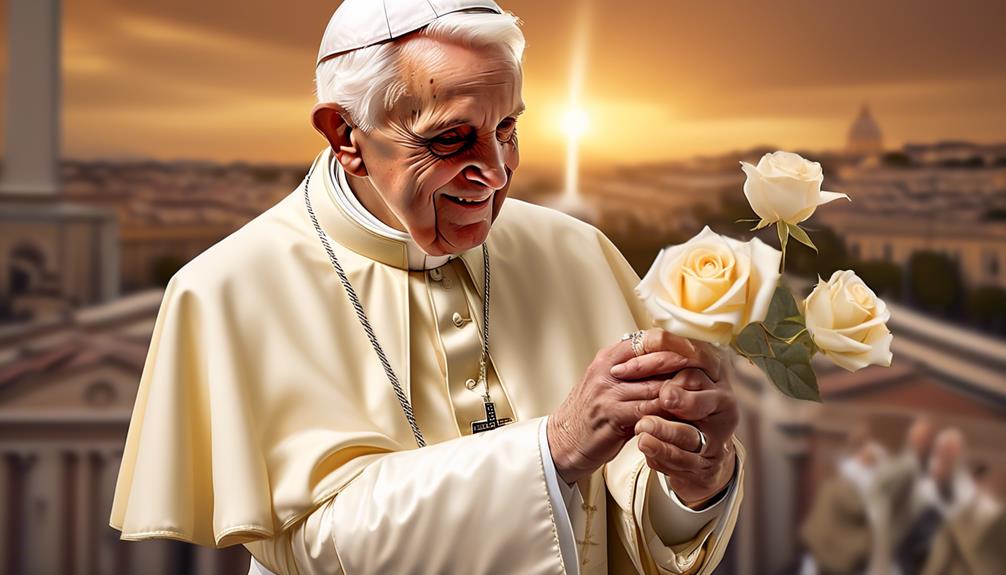
Pope Benedict XVI emphasized the profound significance of love in the lives of believers, highlighting its transformative power and the integral role it plays in the teachings of the Catholic Church. He often spoke about the importance of selflessness in love, underscoring the need for individuals to prioritize the well-being of others above their own desires.
According to Pope Benedict XVI, love isn't merely an emotion or a feeling, but a conscious choice to commit oneself to the good of another. In relationships, this selflessness is crucial for fostering deep connections and cultivating a sense of unity and harmony. The Pope believed that love should extend beyond romantic relationships and encompass all aspects of human interaction, including friendships, family bonds, and even relationships with strangers.
In his teachings, Pope Benedict XVI also stressed that love is a transformative force that has the power to heal and renew. He believed that through acts of love, individuals can experience personal growth and find fulfillment in their relationships. Love, according to the Pope, is the foundation of a virtuous life and the key to building a more compassionate and just society.
Pope Benedict XVI on Prayer
When it comes to prayer, Pope Benedict XVI emphasized the power of silent prayer and the importance of daily prayer. He believed that silent prayer allows us to enter into a deeper communion with God, where we can listen to His voice and be transformed by His presence.
Additionally, he stressed the need for daily prayer as a way to maintain a constant connection with God and seek His guidance and strength in our everyday lives.
Power of Silent Prayer
Silent prayer, an integral aspect of personal communion with the divine, holds a remarkable power to deepen our spiritual connection and foster inner peace, as understood by Pope Benedict XVI. Here are four key benefits of silent meditation, according to his teachings:
- Stillness of the mind: Silent prayer allows us to quiet the noise of our thoughts and distractions, creating space for a deeper connection with the divine.
- Increased awareness: Through silent meditation, we become more attuned to our inner selves and the presence of God, leading to a heightened sense of self-awareness and spiritual growth.
- Inner peace: The power of stillness in silent prayer brings a sense of calmness and serenity to our minds and hearts, enabling us to find peace amidst the chaos of daily life.
- Deepening of faith: Through the practice of silent prayer, our faith is nourished and strengthened, providing us with a solid foundation for our spiritual journey.
Importance of Daily Prayer
Daily prayer holds a significant place in the teachings of Pope Benedict XVI, emphasizing its importance in nurturing our spiritual lives and deepening our relationship with God.
The power of daily prayer lies in its ability to provide solace, comfort, and guidance in our daily lives. Through prayer, we can find a sense of peace and strength, knowing that we aren't alone in our struggles and challenges.
Pope Benedict XVI believed that daily prayer allows us to open our hearts to God, inviting His presence and grace into our lives. It's through this regular communication with God that we can cultivate a deeper understanding of His will and align our lives with His divine plan.
Therefore, making time for daily prayer is essential for those seeking to grow in their faith and draw closer to God.
Pope Benedict XVI on Forgiveness
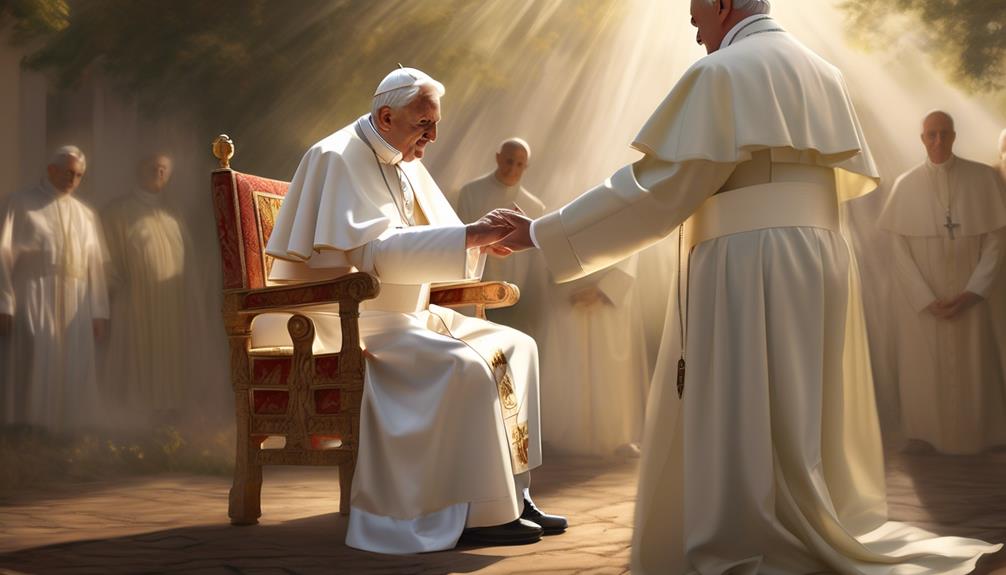
When discussing Pope Benedict XVI's views on forgiveness, it's important to recognize the significance he placed on this virtue.
The Pope emphasized the transformative power of forgiveness, not only for the one who forgives but also for the one who's forgiven.
He believed that forgiveness has the potential to heal wounds and bring about reconciliation, urging individuals to fully embrace the act of forgiving in order to experience its profound impact.
Importance of Forgiveness
The significance of forgiveness is a central theme in the teachings of Pope Benedict XVI. Here are four reasons why forgiveness holds such importance:
- Healing and Restoration: Forgiveness allows us to let go of the hurt and pain caused by others, leading to emotional healing and restoration of relationships.
- Inner Peace and Freedom: By forgiving, we free ourselves from the burden of holding onto grudges and resentment, leading to inner peace and emotional freedom.
- Spiritual Growth: Forgiveness is a virtue that strengthens our relationship with God, deepens our faith, and helps us grow spiritually.
- Building a Better Society: Forgiveness fosters reconciliation, harmony, and understanding among individuals and communities, contributing to the creation of a more compassionate and just society.
In embracing forgiveness, we not only benefit personally but also contribute to the betterment of ourselves and the world around us.
Healing Through Forgiveness
Healing through forgiveness is a transformative process that Pope Benedict XVI emphasized in his teachings. He believed that forgiveness is not only a moral obligation but also a healing process that can bring freedom and peace to the soul. By letting go of anger, resentment, and the desire for revenge, individuals can experience true healing and find inner peace. In his teachings, Pope Benedict XVI highlighted the importance of forgiveness in both personal relationships and societal conflicts. He understood that forgiveness is not an easy task, but it is essential for personal growth and reconciliation. Through forgiveness, individuals can break the chains of past hurts and embrace a future filled with love, compassion, and understanding.
| Forgiveness Benefits | Forgiveness Challenges |
|---|---|
| Brings healing | Requires letting go |
| Restores peace | Demands vulnerability |
| Promotes reconciliation | Takes time and effort |
| Fosters personal growth | Involves facing pain |
| Cultivates compassion | Requires humility |
Embracing Forgiveness Fully
Embracing forgiveness fully, according to Pope Benedict XVI, is a transformative journey that requires the courageous choice to release resentment and embrace healing and reconciliation. To fully embrace forgiveness, one must understand the power it holds in our lives. Here are four key insights on the power of forgiveness from Pope Benedict XVI:
- Forgiveness frees us from the burden of anger and bitterness, allowing us to experience true peace and joy.
- Forgiveness is an act of mercy that brings healing not only to ourselves but also to those we forgive.
- Forgiveness enables us to break the cycle of hurt and violence, promoting harmony and understanding.
- Forgiveness is a reflection of God's love and mercy, embodying the essence of Christian faith.
Pope Benedict XVI on Hope
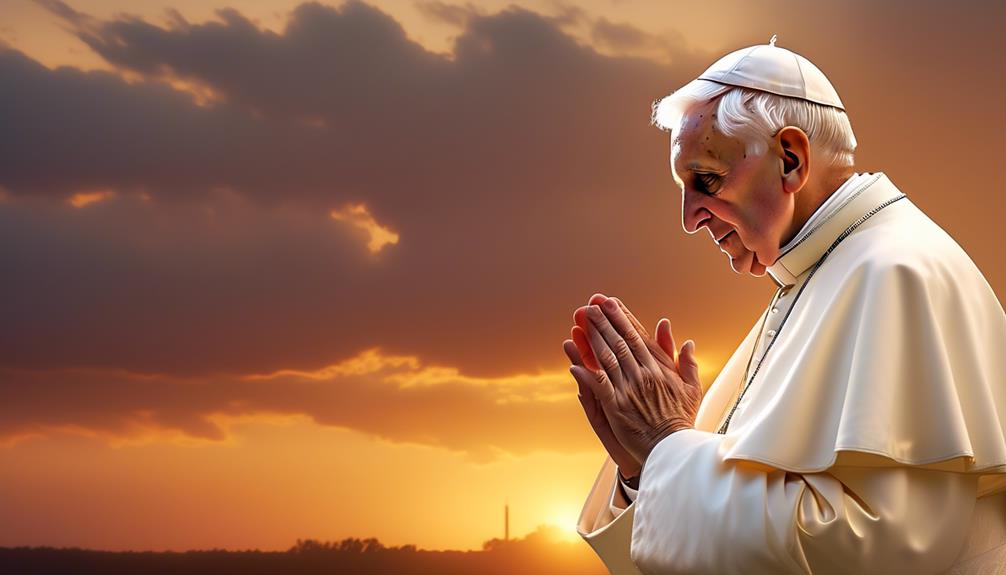
In his teachings, Pope Benedict XVI emphasizes the transformative power of hope, inspiring believers to embrace a future filled with renewed faith and purpose. According to Pope Benedict XVI, hope isn't simply a wishful thinking or a passive optimism, but rather a confident trust in God's promises. He acknowledges that suffering is an inevitable part of human existence, and he encourages individuals to find hope and meaning even in the midst of their suffering.
Pope Benedict XVI teaches that hope is intimately connected to redemption. He believes that through Jesus Christ, God has redeemed humanity from sin and death, offering the hope of eternal life. This hope gives believers the strength to face trials and difficulties, knowing that their ultimate destiny lies in the loving embrace of God.
Pope Benedict XVI also emphasizes the role of hope in shaping our actions and choices. He teaches that hope shouldn't lead to complacency or inaction, but rather to an active engagement with the world. Hope inspires believers to work for justice, peace, and the common good, recognizing that their efforts are part of God's plan for the redemption of the world.
Pope Benedict XVI on the Role of the Church
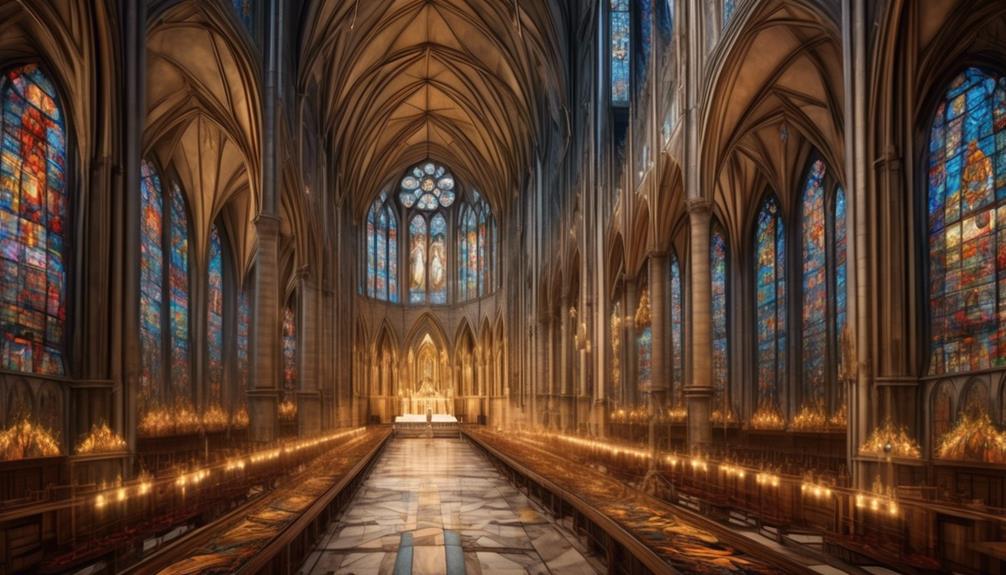
As Pope Benedict XVI expounds on the transformative power of hope, he also addresses the crucial role that the Church plays in fostering and guiding believers towards a future filled with renewed faith and purpose. The Church, in its role, isn't merely an institution, but a beacon of light and love in a world often plagued by darkness and despair. Here are four key aspects of the Church's role in nurturing faith and love:
- Teaching and Preaching: The Church is entrusted with the responsibility of imparting the teachings of Christ, providing spiritual guidance, and proclaiming the Gospel. Through sermons, catechism classes, and educational programs, it equips believers with the knowledge and understanding necessary to deepen their faith.
- Sacraments and Worship: The Church celebrates the sacraments, such as baptism, Eucharist, and marriage, which are sacred rituals that strengthen the bond between believers and God. These sacraments nourish the soul and foster a profound sense of love and connection with the divine.
- Community and Fellowship: The Church serves as a gathering place for believers to come together, support one another, and grow in their faith. It provides a sense of belonging and a platform for fostering relationships based on love and compassion.
- Service and Charity: The Church is called to serve the needs of others, especially the marginalized and vulnerable. Through acts of charity, it exemplifies the love of Christ and becomes an instrument of hope and transformation in the world.
Pope Benedict XVI on the Importance of Family
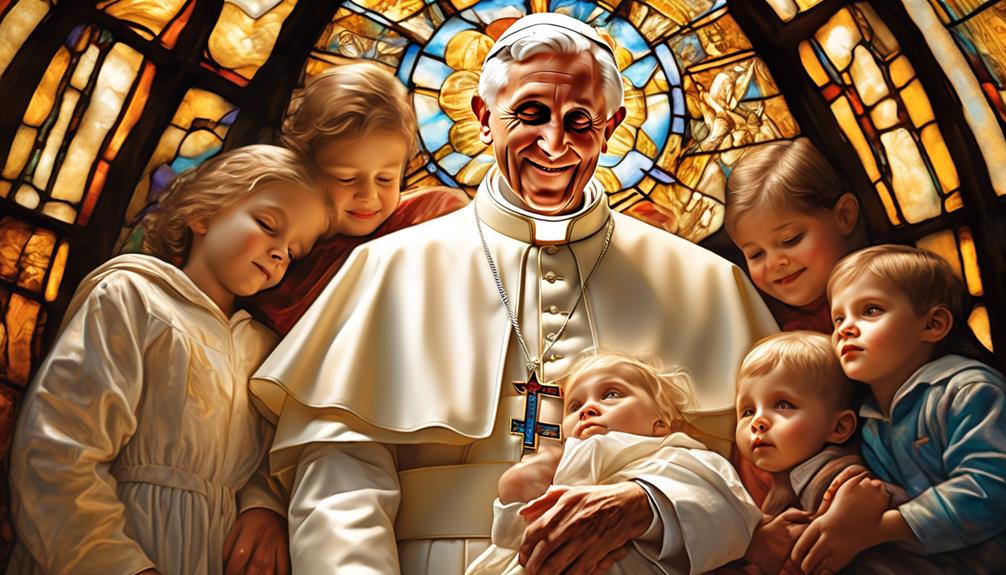
The importance of family is a recurring theme in the teachings of Pope Benedict XVI. He emphasizes the fundamental role that the family unit plays in shaping individuals, fostering love and virtue, and building a strong foundation for society. Pope Benedict XVI's perspective on the importance of family is rooted in the belief that the family is the basic cell of society, where individuals learn to love, to forgive, and to live in harmony with others.
According to Pope Benedict XVI, the family is a school of love, where children first experience unconditional love and learn the values that will guide them throughout their lives. He highlights the significance of the family in transmitting faith, stating that "the family is the first place where the Gospel is proclaimed and where it's lived out."
Additionally, Pope Benedict XVI emphasizes that the family plays a vital role in society. It is the primary place where individuals learn to live in community, to respect one another, and to contribute to the common good. He asserts that a strong and healthy society is built upon strong and healthy families.
Pope Benedict XVI on the Power of Humility

Pope Benedict XVI's teachings shed light on the transformative power of humility in individuals' lives and its profound impact on relationships and society as a whole. Here are four key insights from Pope Benedict XVI's teachings on the power of humility:
1) Humility as a virtue: According to Pope Benedict XVI, humility isn't a sign of weakness but a virtue that allows individuals to recognize their limitations and depend on God's grace. It's through humility that individuals can grow in self-awareness and develop a true sense of their identity.
2) Humility in relationships: Pope Benedict XVI emphasizes that humility is essential for healthy relationships. It enables individuals to recognize the dignity and worth of others, promoting understanding, empathy, and compassion. Humility fosters a spirit of cooperation and allows individuals to work together for the common good.
3) Humility in society: Pope Benedict XVI highlights the importance of humility in society. He emphasizes that a humble society is one that values the well-being of all its members and seeks justice and solidarity. Humility helps to create a society that's inclusive, respectful, and supportive, where individuals can thrive and contribute their unique gifts.
4) The power of servant leadership: Pope Benedict XVI teaches that true leadership is rooted in humility. He encourages leaders to be servant leaders, seeking the well-being of those they lead rather than their own personal gain. By embracing humility, leaders can inspire and empower others to reach their full potential and create a more just and compassionate society.
Pope Benedict XVI on the Dignity of Life
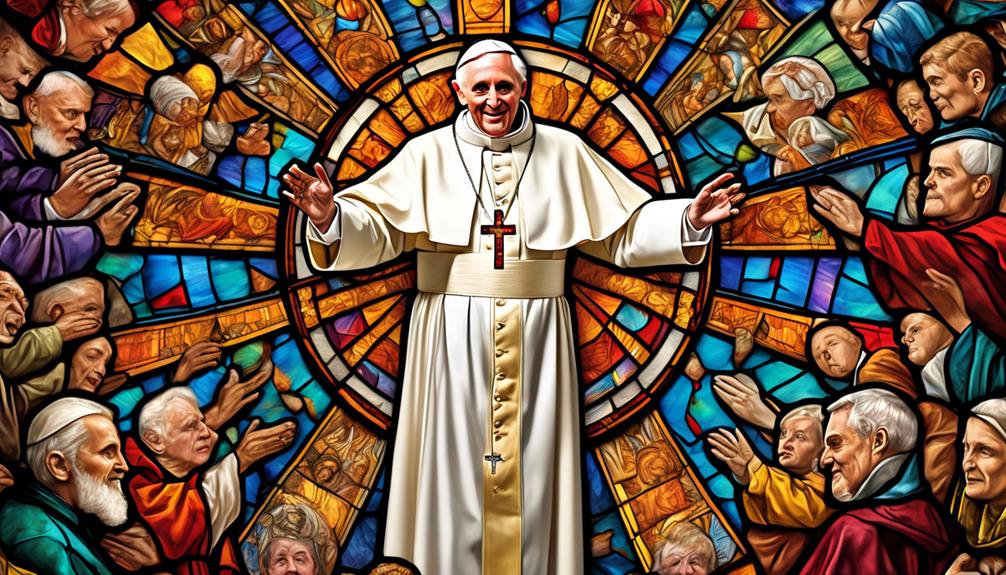
After exploring the transformative power of humility, it's now crucial to examine Pope Benedict XVI's teachings on the inherent dignity of life.
Pope Benedict XVI has been a strong advocate for the dignity of life, consistently speaking out against abortion, euthanasia, and the death penalty. He firmly believes that every human life, from conception to natural death, is sacred and deserving of respect and protection.
In his encyclical letter, Caritas in Veritate, Pope Benedict XVI emphasizes the importance of recognizing the dignity of every human being, stating that 'each person is a gift, endowed with immense dignity.' He emphasizes that this dignity isn't based on an individual's accomplishments or social status, but rather on the fact that every person is created in the image and likeness of God.
The Pope's teachings on the dignity of life have had a profound impact on the pro-life movement. He's called on Catholics and all people of goodwill to defend the sanctity of life and to promote a culture of life in society. He's encouraged individuals and communities to provide support and assistance to women facing unplanned pregnancies, and to advocate for laws and policies that protect the rights of the unborn.
Pope Benedict XVI on the Pursuit of Truth
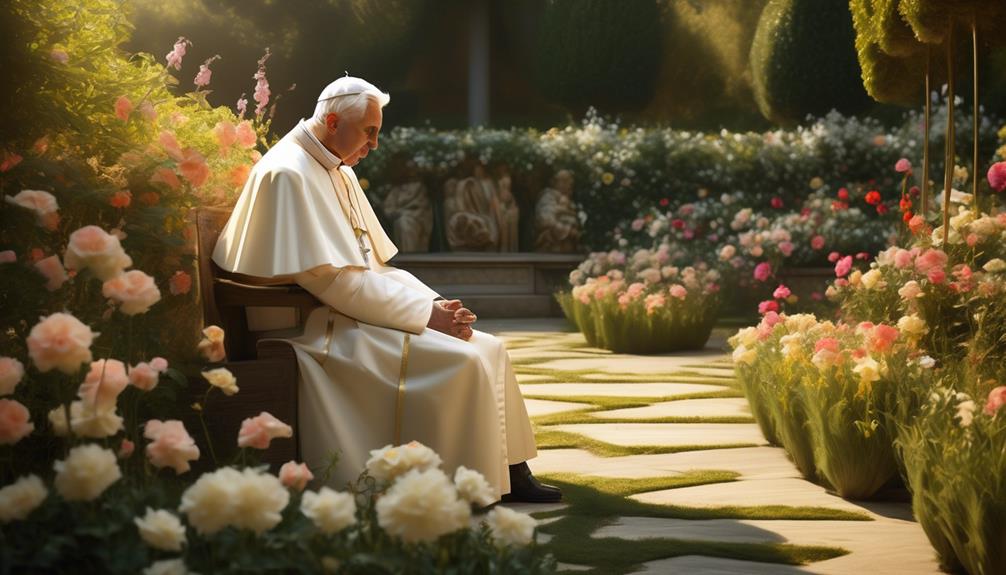
When it comes to the pursuit of truth, Pope Benedict XVI emphasized its importance in our lives.
He believed that seeking the ultimate truth is a fundamental aspect of human existence, as it leads us closer to God.
The Pope saw truth as a divine revelation, a gift from God that enables us to understand the world and our place in it.
Importance of Truth
The pursuit of truth holds immense significance, as emphasized by Pope Benedict XVI. In his teachings, he emphasized the importance of honesty and the significance of integrity in the search for truth.
Here are four key points regarding the importance of truth:
- Truth is the foundation of moral and ethical values. It provides a solid basis for making informed decisions and guiding our actions.
- Pursuing truth leads to personal growth and self-awareness. It allows us to understand ourselves better and encourages us to constantly improve and strive for excellence.
- Truth fosters genuine relationships and authentic connections. It builds trust and strengthens the bonds between individuals, communities, and societies.
- Embracing truth enables us to live a life of meaning and purpose. It aligns our thoughts, words, and actions with our core values, bringing harmony and fulfillment to our lives.
Seeking Ultimate Truth
Seeking ultimate truth is a fundamental aspect of Pope Benedict XVI's teachings. He emphasizes the importance of delving into the depths of knowledge and understanding in the pursuit of truth. The Pope believes that ultimate truth transcends mere human knowledge and is rooted in spiritual enlightenment. He encourages individuals to engage in a profound search for truth, acknowledging that this journey requires an open mind and a willingness to question established beliefs.
According to Pope Benedict XVI, the pursuit of ultimate truth leads to a deeper understanding of oneself, the world, and God. It's a transformative process that requires intellectual rigor, moral integrity, and spiritual discernment. By seeking ultimate truth, individuals can experience a profound connection with the divine and attain a higher level of spiritual enlightenment.
Truth as Divine Revelation
In Pope Benedict XVI's teachings, truth is understood as divine revelation, guiding individuals in their pursuit of ultimate truth. Here are four key insights on the relationship between divine revelation and the pursuit of truth:
- Divine Revelation: Pope Benedict XVI emphasized that God communicates truth to humanity through divine revelation. This revelation is found in Scripture, tradition, and the teachings of the Church.
- Faith and Reason: According to Pope Benedict XVI, faith and reason aren't contradictory but complementary. Reason helps us to understand and interpret divine revelation, while faith enables us to accept truths that surpass human understanding.
- Seeking Truth: The pursuit of truth requires openness, humility, and a willingness to engage in dialogue. Pope Benedict XVI encouraged individuals to seek truth through intellectual inquiry and a deepening relationship with God.
- Moral Truth: Divine revelation also reveals moral truths that guide our actions and decisions. Pope Benedict XVI emphasized the importance of living in accordance with these moral truths in order to find true happiness and fulfillment.
Pope Benedict XVI on the Call to Holiness

Pope Benedict XVI emphasizes the imperative of pursuing holiness in our lives. He believed that every person has a call to holiness, a call to strive for perfection and to reflect the image of God in our thoughts, words, and actions. According to Pope Benedict XVI, holiness is not an unattainable ideal reserved for a select few, but a journey that each individual is called to embark upon.
In his teachings, Pope Benedict XVI stressed the importance of the pursuit of truth in our quest for holiness. He believed that truth is not merely a concept, but a person – Jesus Christ, who is the way, the truth, and the life. Pope Benedict XVI urged us to seek the truth with humility and openness, recognizing that it is through the pursuit of truth that we draw closer to God and grow in holiness.
To further illustrate this point, let us consider the following table:
| Call to Holiness | Pursuit of Truth |
|---|---|
| A universal call to strive for perfection | Seek truth with humility |
| Reflect the image of God in our lives | Be open to the truth revealed in Jesus |
| A journey of growth and transformation | Draw closer to God through the pursuit of truth |
Pope Benedict XVI's teachings remind us that holiness is not a distant goal but a path that we can walk on every day. It is through the pursuit of truth and the grace of God that we can become more like Him and fulfill our call to holiness.
Frequently Asked Questions
What Is Pope Benedict Xvi's Stance on the Role of Women in the Catholic Church?
In regards to the role of women in the Catholic Church, Pope Benedict XVI emphasized the importance of women's unique contributions and their integral role in the Church. He believed that women should have equal opportunities for leadership and service, while still respecting the Church's teachings on the priesthood.
Additionally, Pope Benedict XVI held a firm stance on contraception in marriage, affirming the Church's belief in the sanctity of life and the importance of openness to the gift of new life.
How Does Pope Benedict XVI View the Use of Contraception Within the Context of Marriage?
Pope Benedict XVI's views on contraception within marriage were clear and consistent. He firmly believed that the use of contraception is morally wrong and goes against the natural order established by God. In line with Catholic doctrine, he emphasized the importance of procreation and the unitive aspect of marital relations.
Regarding the role of women in the Catholic Church, Pope Benedict XVI upheld traditional teachings, affirming the complementarity of men and women while maintaining that women should be valued and respected within the Church.
What Are Pope Benedict Xvi's Thoughts on the Inclusion of Lgbtq+ Individuals in the Catholic Church?
Pope Benedict XVI's views on the inclusion of LGBTQ+ individuals in the Catholic Church are rooted in traditional teachings, which emphasize the importance of marriage between a man and a woman. He believed that the challenges faced by the Catholic Church in the modern world require a steadfast adherence to established principles.
While recognizing the inherent dignity of all individuals, Pope Benedict XVI upheld the Church's teachings on sexual morality, which don't condone same-sex relationships. This stance reflects the Catholic Church's longstanding position on this issue.
Does Pope Benedict XVI Believe in the Concept of Original Sin?
Yes, Pope Benedict XVI believes in the concept of original sin. He's spoken about it in various teachings and writings, emphasizing the importance of understanding human nature's fallen state and the need for redemption through Jesus Christ.
Regarding women's role in the church, Pope Benedict XVI affirmed the fundamental equality of men and women while upholding the church's teachings on the reservation of priestly ordination to men. He highlighted the essential contributions of women in various aspects of church life and emphasized their unique gifts and vocation.
How Does Pope Benedict XVI Approach the Issue of the Clergy Sexual Abuse Scandal Within the Catholic Church?
When it comes to the issue of the clergy sexual abuse scandal within the Catholic Church, Pope Benedict XVI's approach is an important topic of discussion.
It's crucial to analyze his response and views on this matter, as well as his stance on the role of women in the Church.
What Impact Did Pope John Paul II Have on the Teachings and Quotes of Pope Benedict XVI?
Pope Benedict XVI was greatly influenced by the teachings and quotes of the famous Pope John Paul II. He often referenced his predecessor’s ideas on love, faith, and the role of the Church in the modern world. Pope Benedict XVI continued the legacy of famous Pope John Paul by espousing similar values of compassion and spirituality in his own teachings.
Conclusion
In conclusion, Pope Benedict XVI's quotes provide insightful and informative teachings on:
- Faith
- Love
- Prayer
- Forgiveness
- Hope
- Humility
- The dignity of life
- The pursuit of truth
- The call to holiness
Like a guiding light in the darkness, his words illuminate the path towards a deeper understanding of these fundamental aspects of our human existence.
Pope Benedict XVI's profound wisdom is a treasure that continues to inspire and guide millions of Catholics around the world.
Lauren’s talent in writing is matched by her passion for storytelling. Her love for books and deep understanding of culture and entertainment add a distinct flavor to her work. As our media and press contact, Lauren skillfully bridges the gap between afterQuotes and the broader media landscape, bringing our message to a wider audience.
